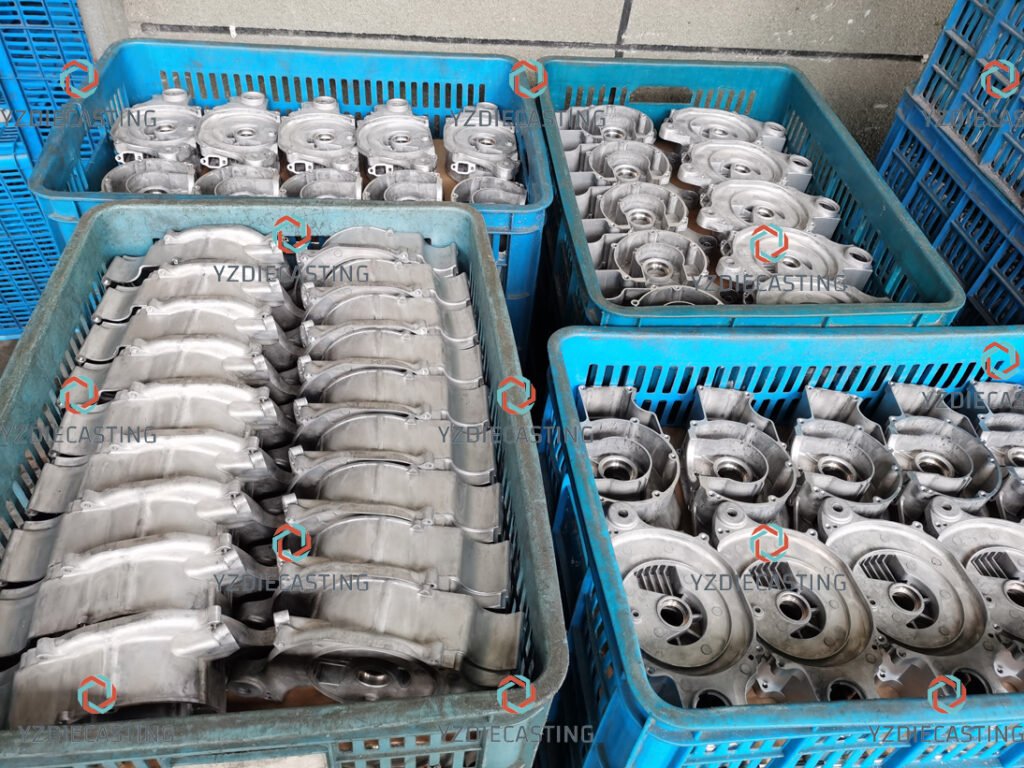Effect of Surface Combustion Mechanism and Density Coefficient of Magnesium Alloy Melt
InSurface flameproof technology and comparison
Surface Combustion Mechanism of Magnesium Alloy Melt
Reaction with oxygen and oxides
——Combustion/oxidation
2Mg+O2=2MgO2
——The moisture in the liquid magnesium alloy vaporizes rapidly
Mg (liquid) + H2O (liquid) = H2O + Mg (small particles)
——Reaction with water/hydrogen explosion
Mg+H2O=MgO+H2O
2H2O+O2=2H2O
——Reaction with silicon oxide
2Mg+SiO2=2MgO+Si
Influence of density coefficient
The strength of the molten metal’s anti-oxidation ability is determined by the difficulty of the membrane that hinders the passage of the reacting substances.
G=V1/V2
V1: volume of metal oxide
V2: Metal volume
G: Density coefficient
The density coefficient of Mg is 0.79. The density coefficient of Al is 1.28. The surface of the Al liquid is a dense oxide protective film, which insulates the metal from the air. The surface of magnesium liquid is porous and loose tissue.
The stress state is tensile stress, and magnesium is easy to evaporate. And contact with air to oxidize and burn. There are only cauliflower-like oxides on the surface of the starting alloy liquid, which emits red awns, and as the oxidation reaction intensifies, a large amount of heat is released.
The temperature can reach up to 3000 degrees. Eventually, it emits a dazzling light, and white smoke generated by the combustion of magnesium vapor appears, and the raw material becomes waste residue.
There are two ways to prevent magnesium alloy from burning. One is to improve the density coefficient of the alloy liquid surface; the other is to use a covering agent or an inert gas to hinder the progress of the reaction.
The specific method is roughly as follows:
-Cover the melt with a salt solvent;
—— Treat the solution under inert gas;
——The addition of inhibiting elements on the solution is used as a covering layer;
—— Treat the solution under reactive atmosphere, and then ascend into a thin protective layer.
Surface Flameproof Technology
1 Salt flux
The salt solvent covers the surface of the magnesium melt at a temperature of 400℃ in the molten state, cutting off the contact between the magnesium liquid and the air, and hindering the occurrence of the magnesium oxidation reaction. The low melting point eutectic mixture is composed of about 20% of high melting point fluorite powder (CaF2). In addition to being used as a covering, it can also purify the melt. The protective effect of the covering salt can be maintained above 800°C.
The disadvantage of salt flux is that it produces corrosive chloride and hydrochloric acid gas when it comes into contact with humid air, which has a great adverse effect on machinery and equipment and the working environment. In addition, the salt flux is easy to form inclusions in the casting, which damages the quality of the casting.
2 Inert gas
At present, nitrogen and argon, which are widely used in industry, can be used for magnesium melt protection. The purpose is to cut off the source of oxygen. Nitrogen can prevent combustion and slowly react with Mg to produce powdery Mg3N2 film. The protection temperature it provides Below 650°C, Ar gas will not react with Mg, but there is also the problem of Mg evaporation.
3 Inhibitory element
The inhibitory elements include Be, Ca, and Zn.
Be has a high diffusion rate in molten magnesium, and the produced BeO has high thermodynamic stability and low volatilization tendency. BeO forms compressive stress on the surface of the melt, and is covered with sufficient BeO on the melt, and the density coefficient At 1.68, it plays a very good protective role.
Zn can also be used as an alloying element to form a dense coating on the magnesium melt. The upper limit of Zn is about 1.5%, otherwise the casting tends to be.
Without the amount of Ca, less than 0.1% can delay the combustion reaction of magnesium, but when the amount of Ca exceeds 0.8%, there is a strong tendency for thermal cracking and mucous membranes.
4 Reactive atmosphere
Both SO2 and SF6 can be used as reactive gases for magnesium melt protection, and the maximum operating temperature can reach 740°C. The consumption of SO2 in the atmosphere only accounts for% of the total volume. It has the lowest cost as a protective gas in the foundry, but it has the following disadvantages:
——When it comes into contact with air, it reacts to generate H2SO4, forming gaseous SO3, which promotes corrosion of machinery and peripheral equipment.
——All equipment accessories and pipes must be made of high-quality steel.
——SO2 and SO3 have toxic and pungent odors, which are harmful to human health.
Like SO2 and SO3, it also has a good protective effect at very low concentrations, and SF6 is non-toxic. When SF6 is in contact with magnesium melt, it forms a dense protective layer of MgF2.
Comparison of existing anti-flammability technologies
- Salt flux: The pollution caused by chloride in the molten metal and the damaging effect of salt vapor on the surrounding environment are not suitable for modern mass production die-casting operations.
- For improving the oxidation state, adding Be, Ca, Zn and other elements can change the casting properties of magnesium alloys, and also have a certain impact on the mechanical properties. Among the three elements, Be has the best effect and does not affect the material’s performance. Cutting performance.
- At present, SF6 is a basic and indispensable protective gas, but it should be added to a closed furnace for good effect. The only disadvantage is that SF6 gas produces a greenhouse effect.
- Using SO2 as protective gas is simple and practical, and can be mixed with SF6.
- The use of inert gases such as Ar, He, and N2 alone in the atmosphere cannot inhibit the evaporation of Mg, but it can still play its leading role in a fully enclosed furnace type.

